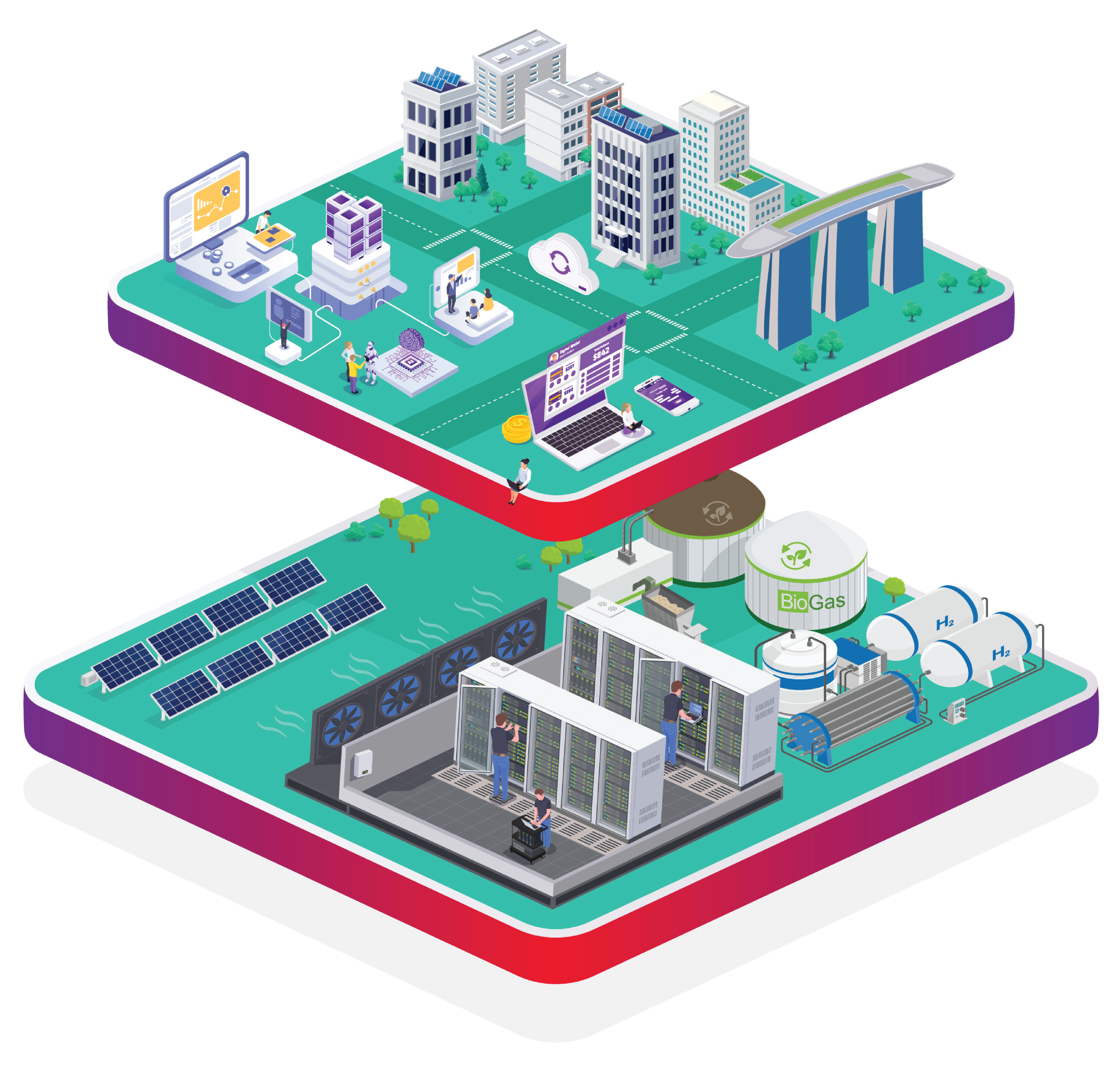- Home
- Themes
- Enabling Sustainable Growth
- A Green and Digital Future Economy
A Green and Digital Future Economy
We will expand our infrastructure capacity to support a vibrant digital economy while achieving net-zero emissions by 2050.
On this page
Singapore aims for net-zero emissions by 2050. We will support this by reducing our environmental impact and carbon emissions while continuing to pursue economic growth. To position Singapore as a global innovation and technology hub, we will develop a vibrant digital economy that harnesses the potential of digital developments to build a Smart Nation.
Our Smart Nation 2.0 goals

A Smart Nation that we can trust, to enable us to use technology safely and securely.

A Smart Nation that helps us grow and empowers us to use technology confidently.

A Smart Nation that keeps us together and strengthens our communities.
“We need to embrace digital and green economies to stay ahead and compete globally.”
Supporting growth in a net-zero city
While growing the economy, Singapore must be conscious of its carbon footprint. The following strategies are being adopted to mitigate Singapore’s carbon emissions to achieve net-zero by 2050:

Planning for low-carbon technologies and decarbonisation pathways such as Carbon Capture and Storage. It supports carbon abatement, especially in difficult-to-decarbonise industries.
Facilitating energy transition towards natural gas, solar, regional power grids and emerging low-carbon alternatives.
Supporting businesses to decarbonise and remain competitive in a low-carbon economy through initiatives such as the Resource Efficiency Grant for Emissions (REG), Energy Efficiency Grant (EEG) and Enterprise Sustainability Programme (ESP).
Learn more about each:
Bringing together a circular economy
Sungei Kadut Eco-District (SKED) is an upcoming hub for industries such as agri-tech, environmental technology and built environment. Today, it houses Kranji Green and TimMac, which are multi-storey developments that cluster companies from the built environment sector to promote collaboration. Their tenants include suppliers of metal products, timber products and machinery, as well as recyclers of metal, paper and plastic waste.

Building future-ready digital infrastructure
Digital infrastructure enables much of how we live, work and play in Singapore today. It also powers our digital economy, which amounted to $113 billion in 2023 – surpassing the financial services and insurance sector and is comparable with the manufacturing sector. Emerging technologies such as artificial intelligence are further raising the productivity and competitiveness of our industries.

To optimise our digital infrastructure and support the growth of a vibrant digital economy, Singapore is:

Setting aside land for new data centres to store and process the vast amounts of data needed to power the digital services that businesses and consumers rely on daily.

Coordinating the deployment and sharing of underground fibre-optic cables, telecommunication exchanges and rooftop antennas, which form the broadband and mobile networks that connect us domestically.

Studying the co-location of submarine telecommunication cables and landing points with other infrastructure to optimise our sea space and stay connected to the world.
Greening our data centres
Today, Singapore is a regional data centre hub with a total capacity exceeding 1.4 gigawatts. The Infocomm Media Development Authority (IMDA) is partnering with the industry to chart sustainable data centre growth through the Green Data Centre Roadmap. It aims to accelerate the energy efficiency of data centres and their use of green energy by:
Raising energy efficiency standards through certifications such as the refreshed Green Mark for Data Centres and the Tropical Data Centre Standard.
Introducing incentives to encourage enterprises to use more energy-efficient computers and IT equipment.

Keeping our data cool in the tropics
Data centres in Singapore typically maintain temperature at or below 22°C, which requires significant energy due to the hot and humid climate. In 2023, IMDA launched one of the world’s first standards to improve energy efficiency for data centres in tropical climates, thereby reducing cooling and energy needs.
A successful example of the Tropical Data Centre Standard is BDx, a co-location data centre provider in Singapore. The facility cut energy consumption for cooling by 7 percent simply by raising operating temperatures from 23°C to 25°C. This was achieved through customer engagement and using predictive analytics driven by artificial intelligence for real-time temperature adjustments.

Future data centres can achieve even more energy savings through advancement in technologies such as alternative cooling methods, use of green energy, and AI-driven power management systems, to drive a greener digital future.

